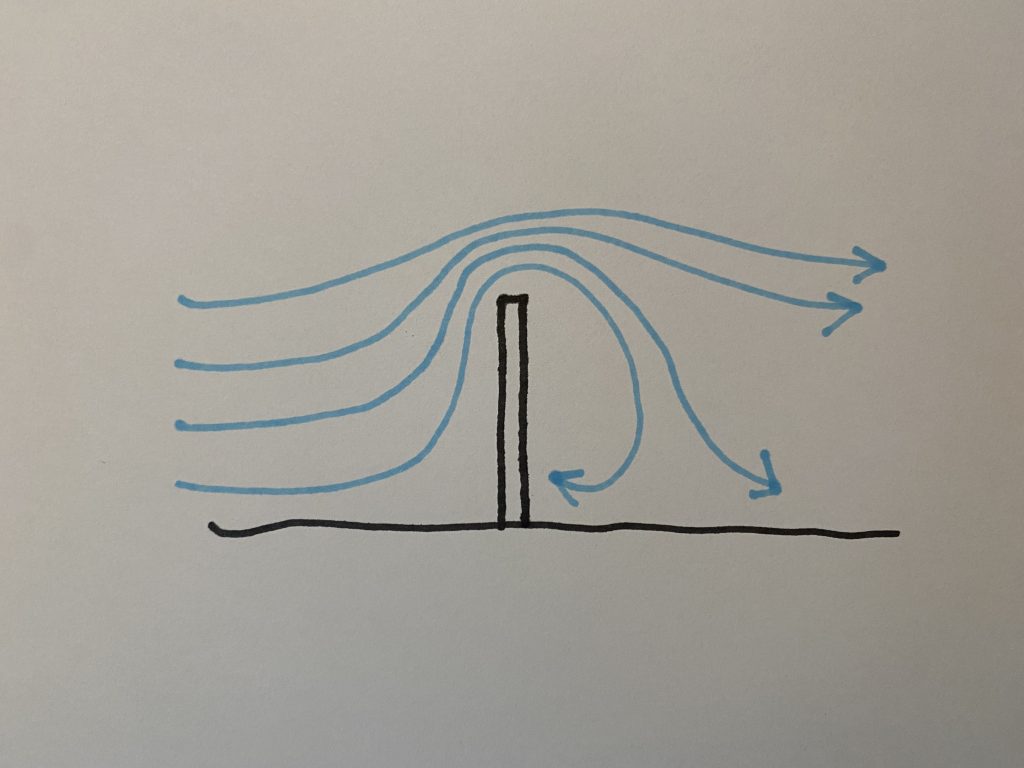Given some of the weather we’ve had recently, I thought it would be useful to look at ways to reduce the impact of wind on a garden.
Amongst other things, windy conditions in a garden can damage plants, cause moisture loss in the soil, destroy potential insect habitats, and make it downright unpleasant to sit outside!
The answer is to create a windbreak; however this needs to be given careful consideration so as not to make the conditions worse. As the diagrams illustrate, erecting a solid barrier will force the wind up over the top. This will cause an increase in wind speed above the height of the barrier. It will also cause swirling winds and eddies immediately behind the barrier. A better solution is to create a windbreak with 50-60% permeability. This will still allow the air to flow through, but at a reduced speed.
-

Solid windbreak causes acceleration and swirling -

Permeable windbreak allows air to pass through
Types of windbreak
Windbreaks can be living or artificial: a living windbreak such as a hedge or line of trees will be attractive and long-lasting, although may take some time to establish. Selected species will need to be wind-tolerant and fairly fast-growing. Shrubs such as Cotoneaster, Elaeagnus, and Viburnum could work well for example. It’s better to plant smaller specimens of fast-growing shrubs than more mature shrubs as they are likely to be quicker to establish.
Artificial windbreaks will require a sturdy support structure to withstand the wind. Cladding should be fixed to the windward side of any posts. Hit and miss horizontal slats will provide privacy, while maintaining permeability.
Sizing and positioning
A windbreak will reduce wind on its leeward side to a distance of 8-10 times its height. That will give some idea of the height that might be required to protect your garden. They should be wider than the area requiring protection, to minimise the effects of wind coming around the sides.
Generally, windbreaks should be positioned to face the prevailing wind direction. It may be however that you want to protect your garden from particularly cold northerly winds instead.
Site specifics might also influence the position of a wind break – for example, if the garden is on the side of a hill, or if wind is funnelled into the garden between existing buildings.
Second line of defence
Having created your windbreak, you might decide to give extra protection to specific areas within the garden, such as a seating area or vegetable patch. Again, garden dividers can be living or artificial. Examples of living dividers might include espaliered fruit trees, whilst decorative screens provide instant artificial barriers.
-

Espalier tree (c) Gardeners World -

(c) Screen With Envy
In short, with some careful planning it’s possible to make your garden a tranquil and more sheltered space.
